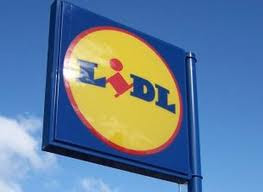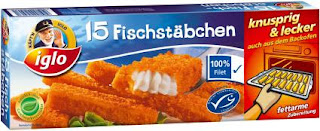 On Monday I reported on the remarkable news broken by the News of The World that discount chain Lidl's latest £3.99 perfume, Suddenly Madame Glamour, was preferred by 150 women in a blind test to Chanel's Coco Mademoiselle, which costs 15 times as much. Since then, I have spent quite a bit of time on the phone to several helpful people at Lidl Customer Services in a bid to track down the new scent in a store near me. Stocks arrived in Cannock yesterday, some twelve miles away, but the Stafford branch of Lidl had none in its delivery this morning, and I was advised to call again on Saturday to see what had turned up in the next shipment.
On Monday I reported on the remarkable news broken by the News of The World that discount chain Lidl's latest £3.99 perfume, Suddenly Madame Glamour, was preferred by 150 women in a blind test to Chanel's Coco Mademoiselle, which costs 15 times as much. Since then, I have spent quite a bit of time on the phone to several helpful people at Lidl Customer Services in a bid to track down the new scent in a store near me. Stocks arrived in Cannock yesterday, some twelve miles away, but the Stafford branch of Lidl had none in its delivery this morning, and I was advised to call again on Saturday to see what had turned up in the next shipment. But that's the problem, you see - the stores don't seem to know what is going to come in the next drop: it might be perfume, it might be salami, and it might equally well be a rotary clothes line, a motorcyle helmet or flippers. Now you'd think there must be some kind of a method in this merchandise madness, for how else could an individual store replenish its stocks of milk, say? It seems unlikely on the face of it that the deliveries of all categories of goods could be totally arbitrary, as opposed to just the discretionary items like all the above...and, er...perfume?
 Given the vagaries of the Lidl distribution system, and the fact that I was afraid I might be racking up a phone bill to the 0870 number of Lidl's Customer Services that far exceeded the cost of Madame Glamour itself, I decided tonight to seize the initiative and drive to Cannock. My main contact at Lidl had tried valiantly to speak to the manager on my behalf to confirm that there were still stocks left, but had not been able to get through by the end of his shift, so it was a calculated risk to go that far on spec.
Given the vagaries of the Lidl distribution system, and the fact that I was afraid I might be racking up a phone bill to the 0870 number of Lidl's Customer Services that far exceeded the cost of Madame Glamour itself, I decided tonight to seize the initiative and drive to Cannock. My main contact at Lidl had tried valiantly to speak to the manager on my behalf to confirm that there were still stocks left, but had not been able to get through by the end of his shift, so it was a calculated risk to go that far on spec.Well, as it happens I nearly didn't make it, for my satnav had one of its funny turns and kept taking me to Church Street, Bridgtown (an outlying district), instead of Church Street in Cannock proper. So in the end I just switched the darn thing off and started asking passers by, particularly anyone carrying shopping bags. A mere three people later (the photocopying quest in Poland was excellent training!), I turned into the car park of Lidl, seven minutes before closing time.
Imagine my disappointment to find the perfume fixture all but bare!: just three lone bottles of Suddenly Fleurs were left standing, looking a little lost on their own in the large cardboard tray. Instinctively I knew there was no point asking the staff if they had "some more out back". As with T K Maxx, I always assume with discount stores that what you see on the shelf is all there is.
 So with a heavy heart I started to head out, but something made me ask the check out assistant if they had in fact sold the entire stocks from yesterday's delivery. "No", she replied brightly, "it's here by the till - it's new, you see.". Hallelujah! There were about 10 bottles left, so I picked one up, resisting the allure of Suddenly Madame Glamour's glamorous shelfmates of fruit juice, raisin and chewing gum multipacks, and handed over a fiver. Pocketing my change, I thanked the assistant profusely, a broad grin on my face from yet another tricky mission accomplished...
So with a heavy heart I started to head out, but something made me ask the check out assistant if they had in fact sold the entire stocks from yesterday's delivery. "No", she replied brightly, "it's here by the till - it's new, you see.". Hallelujah! There were about 10 bottles left, so I picked one up, resisting the allure of Suddenly Madame Glamour's glamorous shelfmates of fruit juice, raisin and chewing gum multipacks, and handed over a fiver. Pocketing my change, I thanked the assistant profusely, a broad grin on my face from yet another tricky mission accomplished...Back home, Mr Bonkers was standing by to officiate over our very own blind test, albeit one comprising a not terribly representative sample of one, namely me. First of all I put ear plugs in, in case I might be swayed by the sound of differential sloshing noises (the small vial of Coco Mademoiselle vs the 50 ml bottle of Suddenly Madame Glamour). Then I offered up my inner arms to Mr Bonkers (the prime wrist sites having been taken earlier that day by Opium Fleur de Shanghai), and squeezed my eyes tight shut. Mr B did his best to spray jets of scent of comparable force from a similar distance, so that the only thing I had to go on was the respective smells of the two perfumes on my skin.
 As the first spritz hit my arm, it wafted up to my nose and I thought: "That's Coco Mademoiselle, I recognise that!", but once the second one was applied, I was not so sure any more, as they were remarkably similar. The second one seemed stronger, with more of a patchouli note to it, so I decided that it was probably the Coco Mademoiselle after all. I actually preferred the first scent, because it was softer, like an EDT version of the Coco, near as dammit. And yes, I sensed that there might also be "less going on with it", but to be honest, my perfume deconstruction skills are so remedial that I couldn't really tell you what I thought WAS going on with the scent I now believed to be Coco Mademoiselle.
As the first spritz hit my arm, it wafted up to my nose and I thought: "That's Coco Mademoiselle, I recognise that!", but once the second one was applied, I was not so sure any more, as they were remarkably similar. The second one seemed stronger, with more of a patchouli note to it, so I decided that it was probably the Coco Mademoiselle after all. I actually preferred the first scent, because it was softer, like an EDT version of the Coco, near as dammit. And yes, I sensed that there might also be "less going on with it", but to be honest, my perfume deconstruction skills are so remedial that I couldn't really tell you what I thought WAS going on with the scent I now believed to be Coco Mademoiselle.After several solemn challenges by Mr Bonkers of the "Is that your final answer?" variety, I settled on my verdict and he confirmed that I had correctly told the two scents apart. I asked him if he would like to smell them now and see which he preferred, to which he replied: "I can smell them both from miles away - just take yourself away, will you?" So no advance on our sample of one, then...
On a whim I doorstepped my next door neighbour, who just happened to be wearing Coco Mademoiselle herself today!! I told her that I was wearing it on one arm and the new Lidl scent on the other, and challenged her to figure out which was which. She smelt my arm with the Coco on and pronounced it quite clearly to be "NOT Coco", and was unable to detect any perfume whatsoever on my other arm! Granted, Suddenly Madame Glamour is quite a light scent for an EDP, but I could still smell it myself. And how interesting that she didn't clock the Coco Mademoiselle on me, whilst wearing it herself. It just goes to show how bamboozling this blind testing lark can be, even with odds of 1 in 2.
 Now here's the rub...as the evening wore on, I warmed to the Coco Mademoiselle sample on my left arm: it seemed to have more body and complexity, but for reasons that I could not put my finger on. Pressing into service a medical term typically applied to urinary tract infections, I now believed the Coco sample was slightly superior for "non-specific" reasons that were something to do with its "modern chypre" base.
Now here's the rub...as the evening wore on, I warmed to the Coco Mademoiselle sample on my left arm: it seemed to have more body and complexity, but for reasons that I could not put my finger on. Pressing into service a medical term typically applied to urinary tract infections, I now believed the Coco sample was slightly superior for "non-specific" reasons that were something to do with its "modern chypre" base.But I am wary of this shift in my appreciation of the two scents, for I feel that the truest response was the one I gave when deprived of other sensory stimuli like price, brand name and pack design. And while we are on the subject of packaging, I must say that compared with the cut out, "cut on the bias" box Suddenly D'Or comes in, Suddenly Madame Glamour looks more upmarket, though the bottle itself is identical to Suddenly D'Or, bar the opaque cap.
So in summary, to be perfectly fair, you should count me in with the 91% of women in the blind test, because I did genuinely prefer Madame Glamour blind. It is the quieter of the two, and as regular readers know, I am a sucker for quiet. And what I also learnt is that to my nose it is not so much that Suddenly Madame Glamour smells all that expensive (though a darn sight more expensive than £3.99, I will say unequivocally), but rather that Coco Mademoiselle doesn't either...
Photo of miscellaneous Lidl products from infotradegallery.com, photo of Lidl logo from lichfieldlive.co.uk, photo of Coco Mademoiselle sample from cgi.ebay.uk, other photos my own
































